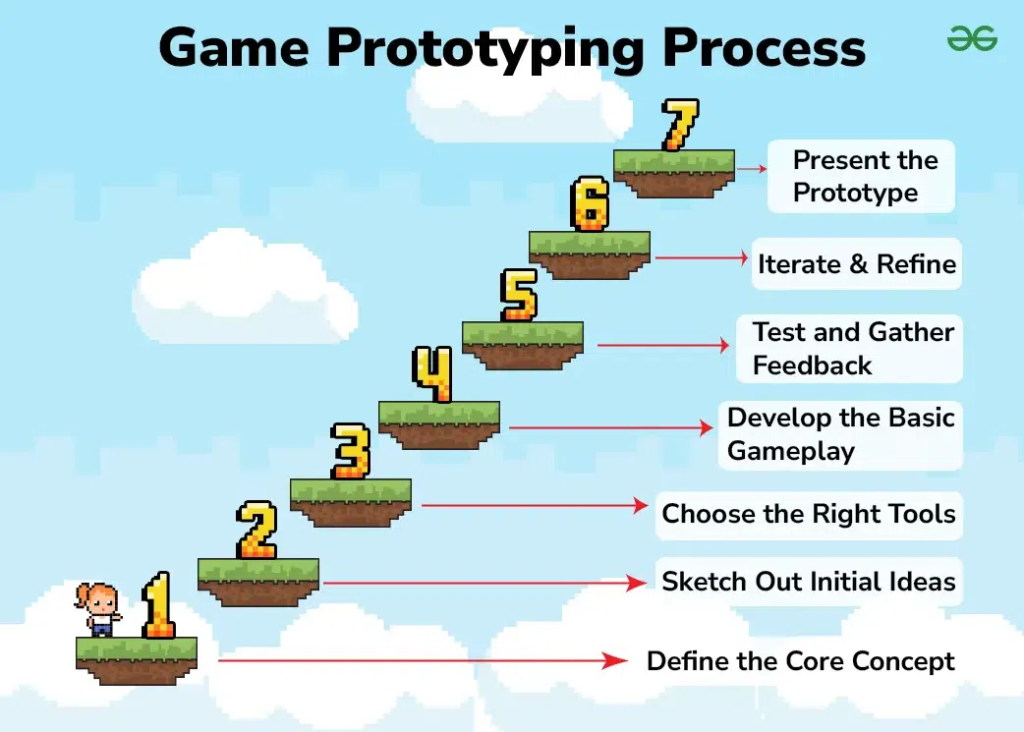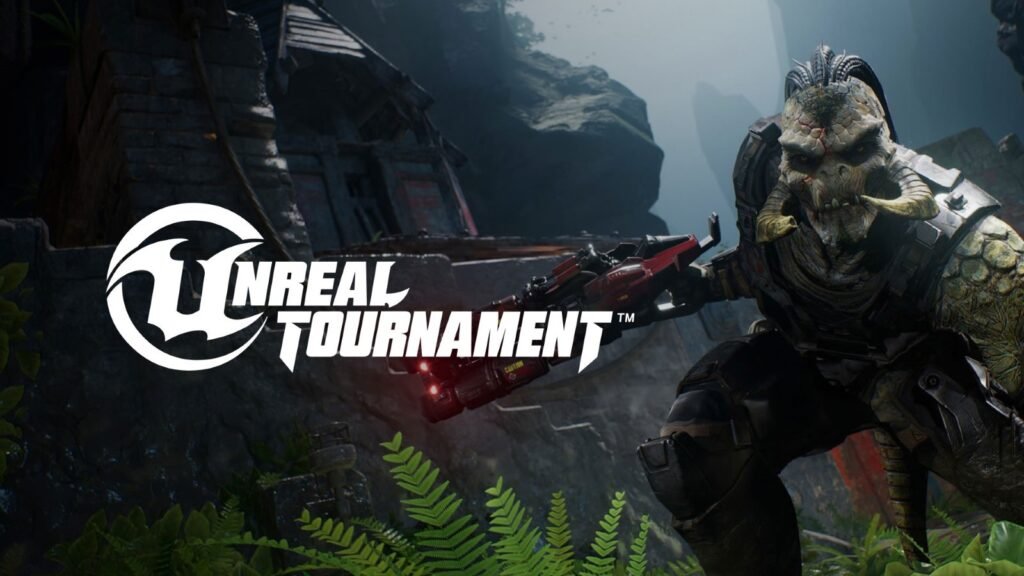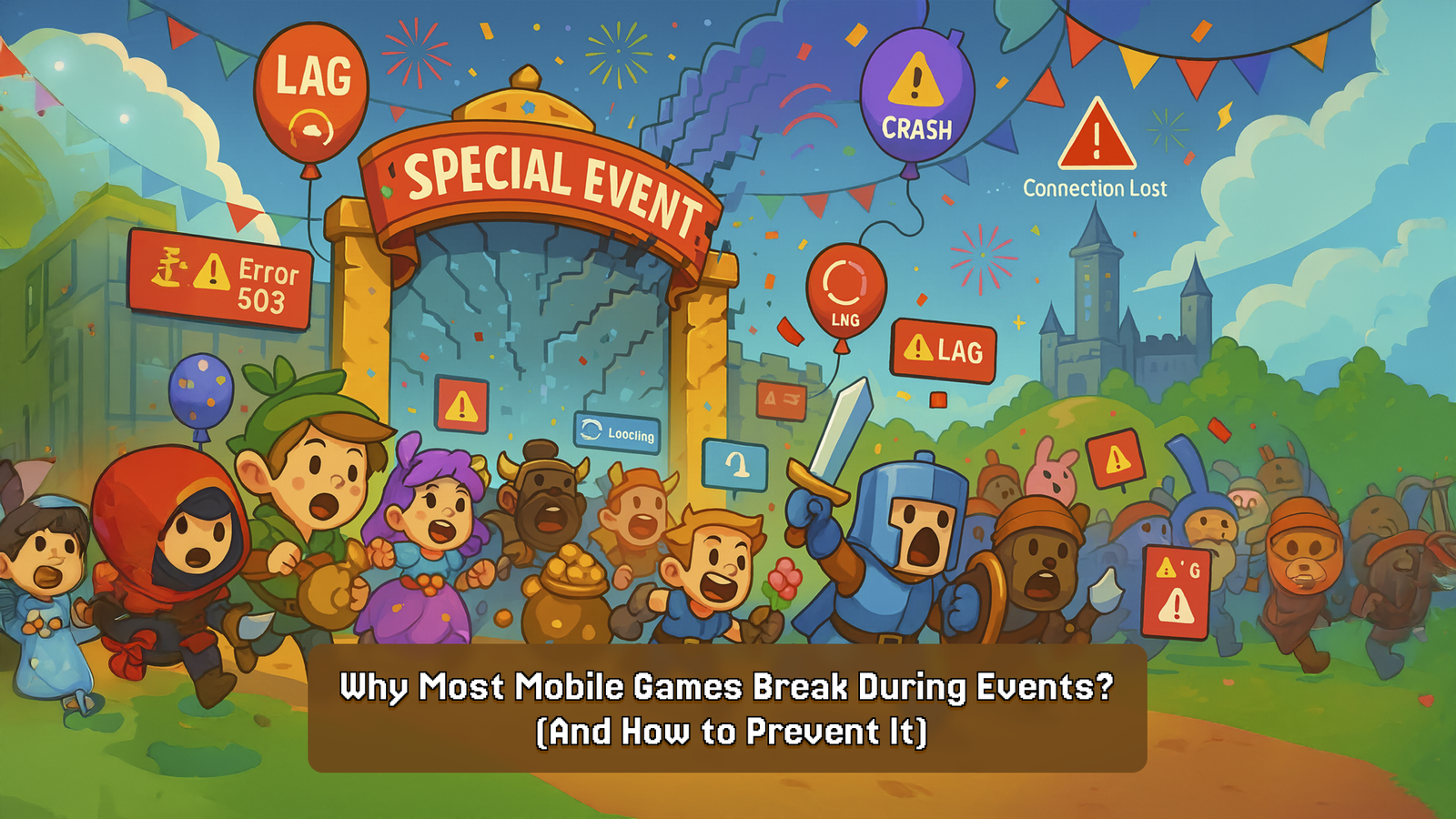Understanding Game Prototype Development: Key Insights and Essentials
Understanding Game Prototype Development: Key Insights and Essentials

Contents
 Game Prototyping is one of the most important aspects of game development. With more and more unoptimized games flooding the market, prototyping has become more important than ever. Seasoned professionals can test out both ideas and game mechanics with this. As a result, by the time the finished product is released to the public, it comes out in a more polished state with strong core mechanics.
In this article, we will explore the benefits of game prototyping and discuss how it helps in identifying potential issues.
What Is Game Prototyping?
Game Prototyping is the process of creating a basic version of a game to test concept, mechanics and ideas before the beginning of full development. This allows game developers to focus on the core gameplay loop which can then be iterated upon with more ease. Moreover, it also helps answer fundamental questions like:
Game Prototyping is one of the most important aspects of game development. With more and more unoptimized games flooding the market, prototyping has become more important than ever. Seasoned professionals can test out both ideas and game mechanics with this. As a result, by the time the finished product is released to the public, it comes out in a more polished state with strong core mechanics.
In this article, we will explore the benefits of game prototyping and discuss how it helps in identifying potential issues.
What Is Game Prototyping?
Game Prototyping is the process of creating a basic version of a game to test concept, mechanics and ideas before the beginning of full development. This allows game developers to focus on the core gameplay loop which can then be iterated upon with more ease. Moreover, it also helps answer fundamental questions like:
-
- Is continuing development worth it financially?
-
- Is the game fun to play?
-
- What needs to be tweaked to elevate and distinguish the game?
Game Prototyping Process
Building a game prototype requires a series of key steps that turn your initial idea into a functional version. Game prototyping process is as follows: Step 1: Define Core Concept Begin by pinpointing the central concept or gameplay mechanic you want to evaluate. Concentrate on what sets your game apart, whether it’s the narrative, characters, or gameplay style. Take the example of Fortnite. What sets it apart from other battle royales is its building mechanic. But Epic Games added the building mechanic early in development, making it a core part of Fortnite, when Fortnite was a Co-op PvE shooter. At this point, simplicity is key—focus on the core elements that define your game. Step 2: Draft Initial Concepts Create rough sketches or wireframes to visualize the game structure. This step allows you to not only map the interactivity of elements but also plan ahead with things like narrative threads. Along with this, wireframing can also be done to create a basic level design of sorts on which the finished product can be built. Some of the most commonly used tools for wireframing are:-
- Figma
-
- Framer
-
- Balsamiq
-
- Proto.io





Benefits of Game Prototyping
-
- Identifies issues early: Prototype testing in games helps uncover potential problems before full development.
-
- Refines core mechanics: Game prototyping allows developers to test and improve gameplay elements.
-
- Encourages creativity: Prototyping enables exploration of new concepts without finalizing them immediately.
-
- Saves time and resources: Early testing helps avoid committing to flawed ideas, preventing costly mistakes.
-
- Fosters collaboration: Team members align on the project’s vision through effective prototype testing.
-
- Multiple projects can co-exist: Since prototyping is not resource intensive, a lot of projects can co-exist in this stage as only minimal resources are needed.
-
- Supports investor engagement: A strong prototype serves as proof of concept, attracting potential investors and backers.
-
- Informs decision-making: Game prototyping provides valuable insights, guiding better development choices.
Tips For Making Successful Game Prototypes
A designer can develop efficient game prototypes through a number of ways. Below are some tips for making successful game prototypes:-
- Avoid detailing and prioritize core elements to create a simple version for testing.
-
- Focus on creating an enjoyable experience for the users. Place emphasis on creating unique elements that can retain user’s attention for a long period.
-
- Get feedback from actual gamers. Take criticism sportingly and work on the flaws.
-
- Build, test, and refine your prototype multiple times, making adjustments based on feedback and observations.
-
- Don’t forget to document the process to record key decisions during the game development cycle.
Conclusion
A game prototype hugely impacts the final product. It plays a key role in the planning stage. Successful prototype testing in games boosts the team’s confidence to produce the desired results. Remember, that game developers create experiences that resonate with the target audience in an interactive way. Lastly, if you are a game developer yourself, looking to make your first game or even a seasoned professional, then reach out to us at Xpress Gaming. With our team of experts, you can rest assured that your game will be crafted to perfection. So, what are you waiting for? Get in touch now!Client Testimonials Blog ID - 16113
At Kuriosity QA, we are committed to providing the highest quality gaming QA services to our clients in the gaming industry. Here’s what some of our satisfied clients have to say about working with us:



